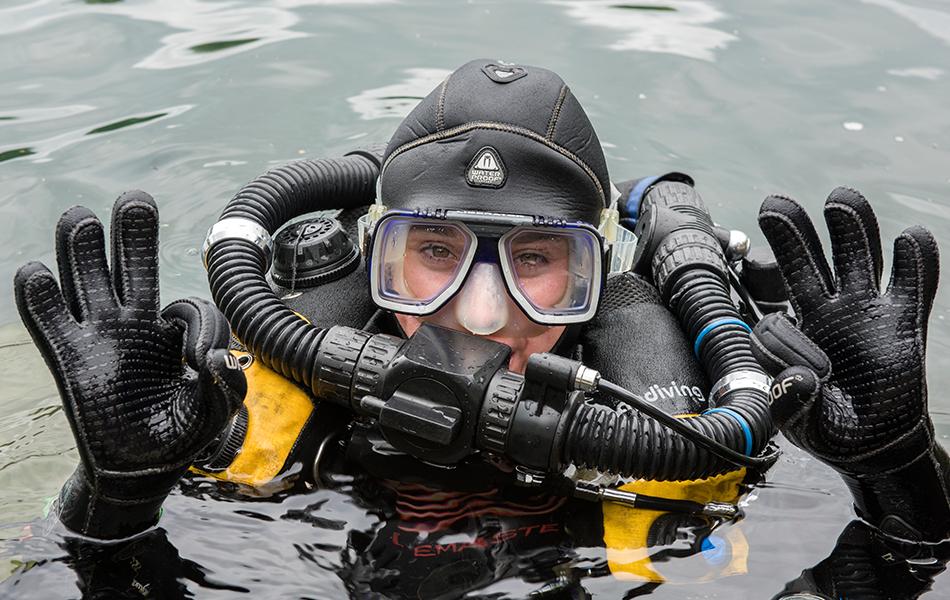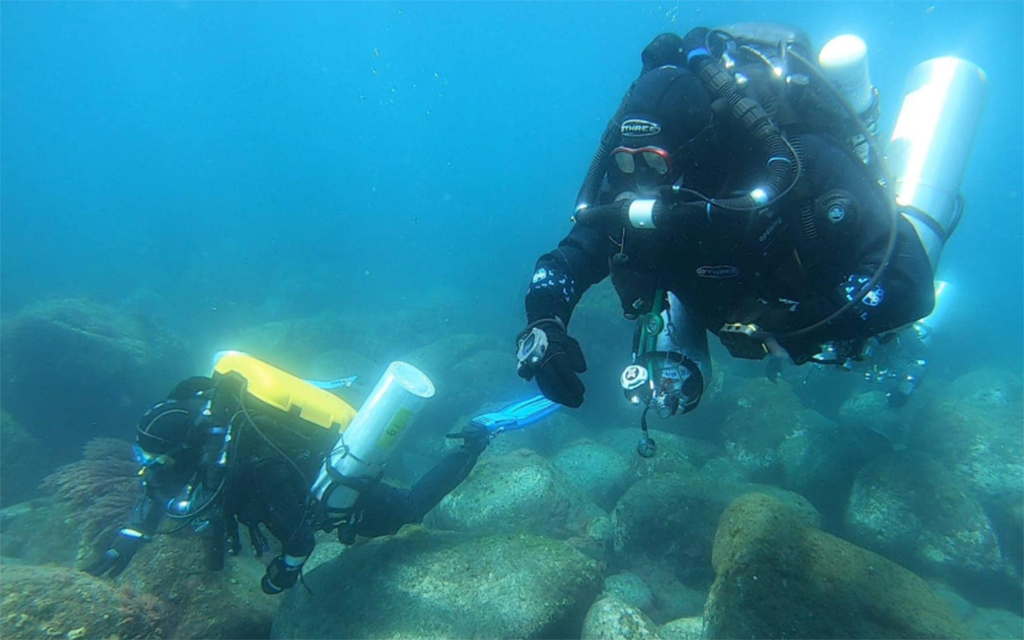
BSAC MOD 2 Instructor Alex 'Woz' Waryznski considers how to produce workable CCR bailout plans based on the 'worst case' diver with the highest air consumption.
When we start out in BSAC dive training, before we have had the chance to properly calculate our surface air consumption (SAC) rate, BSAC recommends gas planning based on 25 litres per minute (LPM).
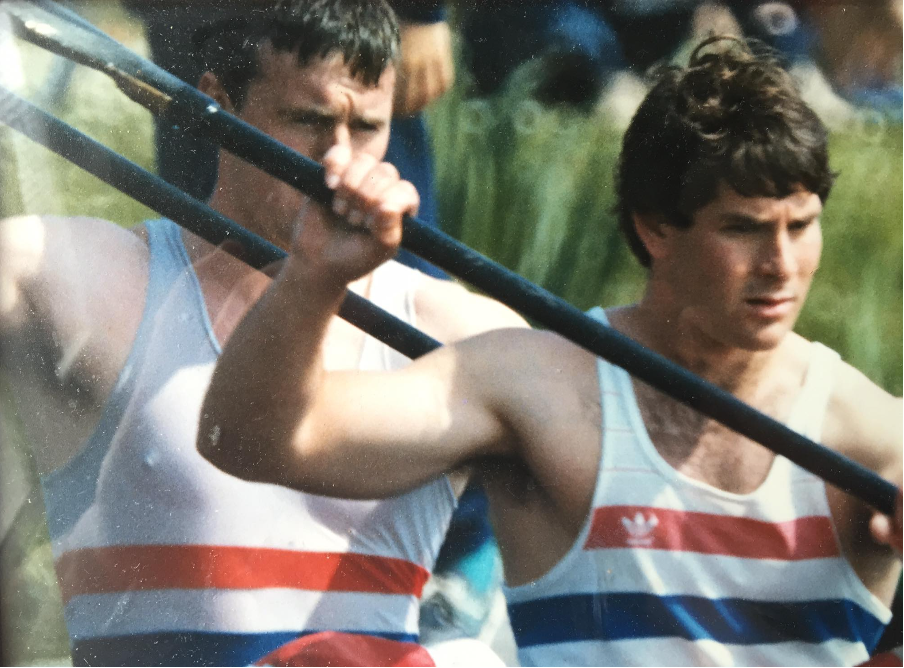 A few dives later with a bit of experience under our belts, we start to use a more realistic rate based on our actual measured rate, usually much lower... but what if you are a former Olympic medal winning athlete and a bit of a statistical outlier, like BSAC’s Adrian Collier?
A few dives later with a bit of experience under our belts, we start to use a more realistic rate based on our actual measured rate, usually much lower... but what if you are a former Olympic medal winning athlete and a bit of a statistical outlier, like BSAC’s Adrian Collier?
Gas planning 101
While teaching on a recent CCR Mod 2 (60m) course at Twin Peaks Diving in the Azores, I started the Group gas planning with the team, as usual, to produce workable bailout plans based on the 'worst case' diver with the highest air consumption. Most of us knew what our SAC rate was, but we needed to confirm this so a few minutes breathing from a 1-litre cylinder enabled us to measure our SAC exactly.
The team were all carrying a pair of 11-litre bailout cylinders, one that contains trimix for deep bailout, and another with 50% nitrox for decompression in the shallows. With our 'worst case' SAC figures, it was easy to plug the numbers into Multideco and find out what the longest bailout we could do with the gas we were carrying, assuming the highest SAC rate. Then just plan a dive that’s shorter than this. Simple, and avoids the round and round iteration where you guess at a dive as your first step. We also had to check the plan against other consumables – oxygen and scrubber life for example, and all was good.
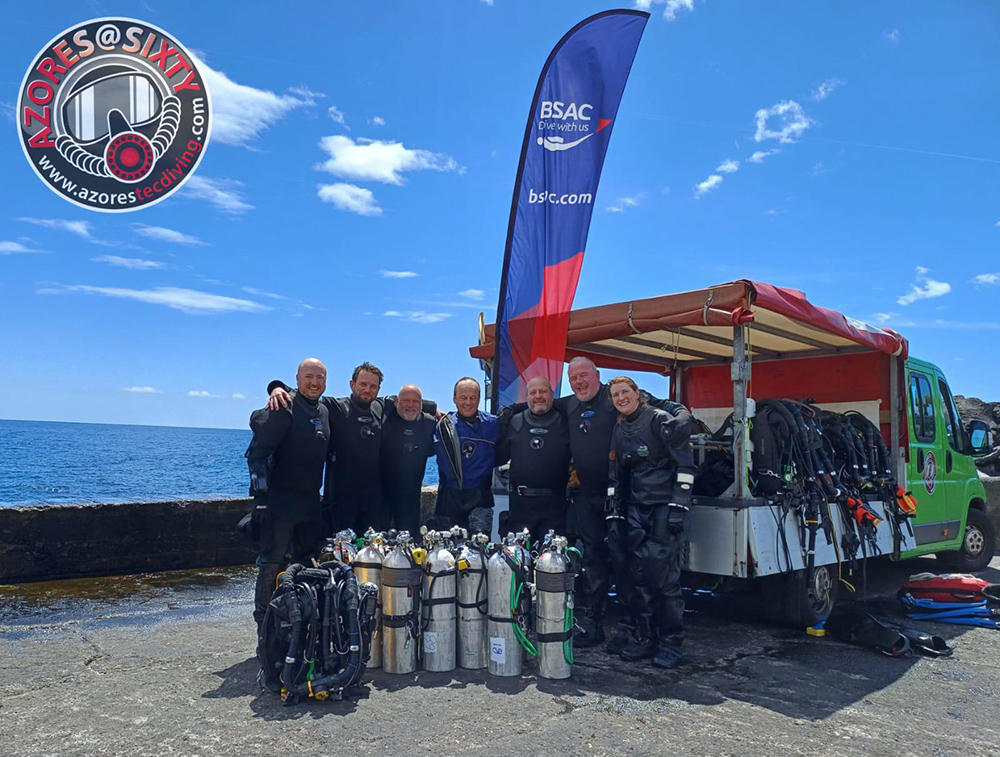
Alarming rate
Out on the real dive itself, the divers were practising skills, bailouts and cylinder handoffs to prep everyone for the deeper dives later on in the course. On dive 2 at around 30m, Adrian’s unit raised an alarm and gave a scrubber warning to ascend. On the AP unit, this isn’t a bailout alarm, but a warning generated from measuring the temperature in the scrubber that the chemicals are nearing their end of life and you should be going up. The warning happened almost exactly at 3 hours – the same duration that the scrubber is tested to. However, the ISO test conditions are far more extreme than normally encountered, assuming the diver is at 40m breathing at 40 LPM in freezing cold 4°C water and producing a whopping 1.6 LPM of CO2.
For the vast majority of divers, these figures are far outside what you can produce – but for an ex-Olympic athlete who has trained to maintain an extreme work rate for an extended period of time, these figures could be met even during normal diving.
It was a first for me hitting that 3 hour alarm, which opened my eyes. I’ve heard from lots of CCR divers saying they had done 4 and even 5 hours on their scrubbers. The reality is that our physiology will differ from diver to diver. I now know my scrubber limits to keep me in the safe zone when doing the deeper diving. Don’t push the manufacturer’s guidelines... - Adrian Collier
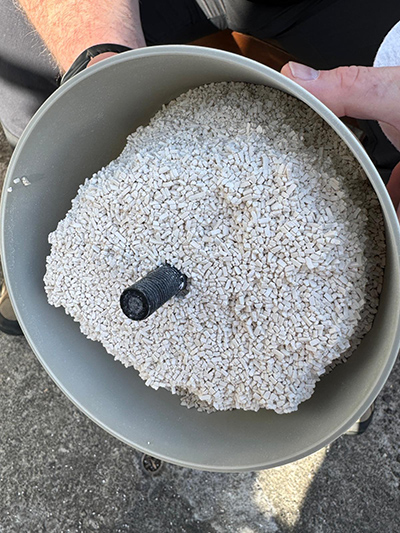
Monitoring performance
To review this, we monitored the scrubber use on subsequent dives using the temp stick and found that Adrian’s scrubber use was constantly high and consistent across several dives. I had taken the gas planning into account from day 1 for all the dives and have always followed the manufacturer’s guidance regarding scrubber times but it just goes to show you can never be too complacent as there are anomalies out there!
The big picture
The learn from this? If you’re a CCR Instructor, Dive Manager or CCR Diver you always need to consider all the factors that contribute to the overall dive times and safety not just the gas bailout plans. The bell curve shows typical distribution of what is most statistically likely but there are some individuals that sit outside even the most tried and tested statistics and we need to lookout for them. Gas consumption and temperature monitoring of your scrubber is essential for CCR planning, you should plan your dives accordingly, not push your own limits, and discuss with the team when planning for optimum safety.

 Author: Alex (Woz) Warzynski | Posted 24 Jun 2024
Author: Alex (Woz) Warzynski | Posted 24 Jun 2024



